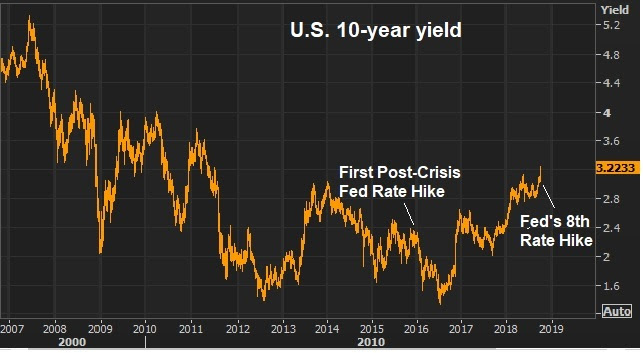October 12, 5:00 pm EST
The S&P 500 has declined more than 5% (from peak to trough) on four different occasions this year. That’s despite an economy that is heating up, finally escaping the slow growth rut of the past decade.
So, should you be fearful when these declines occur, or should you be greedy?
During market declines – with the constant barrage of market analysis and opinion on financial television, in newspapers, or through the Internet – it’s easy to get sucked into drama played out in the media.
And that tends to make many investors fearful.
But while the fearful start running out of the store when stocks go on sale, the best billionaire investors in the world, start running IN.
The fact is, the best investors in the world see declines in the U.S. stock market as an exciting opportunity. And so should you.
Most average investors in stocks are NOT leveraged. And with that, they should have no concern about U.S. stock market declines, other than saying to themselves, “what a gift,” and asking themselves these questions: “Do I have cash I can put to work at these cheaper prices? And, where should I put that cash to work?”
Billionaire Ray Dalio, the founder of the biggest hedge fund in the world, has said what we think is the most simple yet important fact ever said about investing.
“There are few sure things in investing … that betas rise over time relative to cash is one of them.”
In plain English, he’s saying that major asset classes, over time, will rise (stocks, bonds, real estate). The value of these core assets will grow faster than the value of cash.
That comes with one simple assumption. The world, over time, will improve, will grow and will be a better and more efficient place to live than it was before. If that assumption turned out to be wrong, we have a lot more to worry about than the value of our stock portfolio.
With that said, as an average investor that is not leveraged, dips in stocks (particularly U.S. stocks – the largest economy in the world, with the deepest financial markets) should be bought, because in the simplest terms, over time, the broad stock market has an upward sloping trajectory.
This is the very simple philosophy Dalio follows, and is the core of how he makes money and how he has become one of the best, and richest, investors alive.
Billionaires Bill Ackman and Carl Icahn, two of the great activist investors, lick their chops when broad markets sell off on fear and uncertainty.
Ackman says he gets to buy stakes in high quality businesses at a discount when broad markets decline for non-fundamental reasons. Icahn says he hopes a stock he owns goes lower so he can buy more.
What about the great Warren Buffett? What does he think about market declines? He has famously attributed his long-term investing success to “being greedy when others are fearful.”
Bottom line: Declines in the broad market are times to take out your shopping list.
If you need help with your shopping list, join me in my Billionaire’s Portfolio. We follow the world’s bests billionaire investors into their favorite stocks. Click here to learn more.











